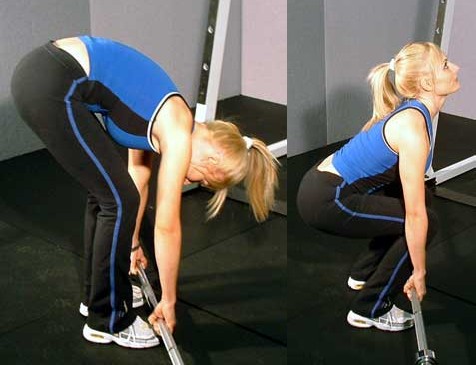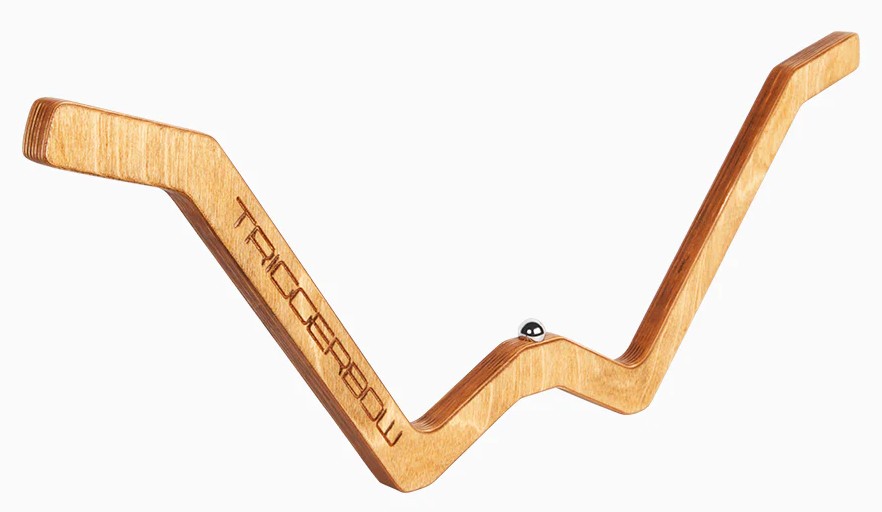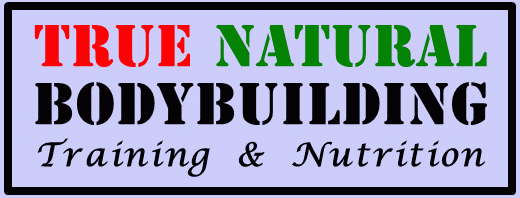Injuries
If you want to realize your bodybuilding goals, avoiding injuries should be your top priority each time you step into a gym. If fate strikes and you get injured anyway, getting rid of the injury completely and as fast as possible should become your top priority. Fortunately, bodybuilding is one of the safest sports that exist, because each movement you make is fully planned in all details, and under complete control of yourself. Unless somebody drops a dumbbell on your head, or kicks against your leg while you are doing heavy squats, you should be able to avoid any serious injuries if you follow some simple guidelines.
Since I am not a medical doctor, and only had a limited number of injuries myself, I am certainly not an expert in this field. However, over 20 years of experience as a true natural bodybuilder, and several injuries later, I certainly built some basic knowledge and understanding on the subject, which I believe is worthwhile sharing with you. If you want to know even more about injuries, search the internet for the information you need. If you ever become the victim of a serious injury, always consult a medical professional.
Kinds of Injuries
I do not discuss here all types of injuries because there are too many, and because I don't know enough about all of them. Therefore, I will focus on the ones that I am most familiar with, and most frequently occur among true natural bodybuilders.
Lower back injuries
Almost everybody has experienced or will experience sooner or later some kind of pain in the back. Especially lower back pain frequently occurs, not only to bodybuilders, but to all people. Although lower back pain can be very debilitating, in most cases it is very innocent and goes away automatically after a few days. An innocent and minor mechanical problem somewhere along the complex structure of the spinal column, such as a muscle cramp for example, may have caused the pain.
In some cases, however, lower back pain can be the result of a very serious injury: a spinal disc herniation (disc bulge), which basically means that the outer, fibrous ring of one of your intervertebral discs is torn and allows the softer central portion of the disc to bulge out and press onto a nerve root. This does not only cause a very debilitating pain, but it also can damage the nerve so seriously that some muscles in your lower body, most frequently the legs, may get temporarily or even permanently paralyzed. In severe cases, emergency surgery may even be required. Therefore, all lower back pain should be taken very seriously.
A light spinal disc herniation may heal by itself within a few weeks or months of rest. However the spinal disc will always remain a weak spot, and the disc damage and pain may recur and even worsen, if you start using your back incorrectly again, or if you put too much stress on it.
Tendonitis
Tendonitis basically is a painful inflammation of a tendon, which is caused by the accumulation of microscopic tears in the tendon due to chronic overuse. Because bodybuilding workouts are extremely stressful for the muscles as well as the tendons (tendons connect the muscles to the bones), tendonitis frequently occurs among bodybuilders. Tendonitis can be very painful and can take very long to heal completely. You mainly feel the pain when you flex or stretch the muscle that is connected to the tendon, or when you press hard with your fingers directly on the tendon. If treated early and correctly (mainly by rest), a tendonitis can heal completely, but it may recur very easily. If you don't let a tendonitis heal, the tendon may completely break during an intense workout.
Torn muscles and tendons
As discussed above, a torn tendon can be the end results of an untreated tendonitis. However, in some cases a healthy tendon may also suddenly break or even tear of the bone, without any warning, in the middle of a very heavy workout. This usually occurs during extreme heavy lifting or by really jerking the weight up in an uncontrolled manner. The latter can also cause the muscle itself to tear partly or completely. A torn muscle or tendon is usually quite painful, and you immediately feel that you lose strength in the concerned muscle. You may also notice blood accumulation at the location of the tear. Fully torn muscles and tendons need to be fixed surgically.
Strains and sprains
A strain, also known as a pulled muscle, is an injury in which a few muscle fibers are torn as a result of overstretching the muscle. The equivalent injury to a ligament (fibrous tissue connecting two bones) is a sprain. Typical symptoms of a strain include localized pain, swelling, stiffness, inflammation, and bruising around the strained muscle or ligament. Strains and sprains do not often occur to bodybuilders because they are mainly the result of sudden, unexpected, unnatural, or extreme movements. Strains and sprains almost always heal completely by themselves after a few days or weeks of rest.
Joint or cartilage damage
If you don't perform you repetitions in a controlled way, and let the weight bounce at the bottom of your reps, or allow an overextension of your joints, you will very likely sooner or later be suffering from joint or cartilage damage. Usually the damage is the results of long term incorrect use of your joints. However, it may also be the result of one very wrong movement, especially when you make uncontrolled, jerking movements with very heavy weights. Damaged joints or cartilage usually results in unstable and painful joints, especially during exercise. The damaged tissue can cause a local inflammation and water accumulation within the joint. Joint or cartilage damage is usually permanent.
How to Prevent Injuries
Injuries are the biggest enemy of every bodybuilder, because they can have a very negative effect on the quality and the results of your workouts, or even stop you completely from training a specific muscle group for a limited or a prolonged period of time. Unfortunately, some types of injuries do never heal completely, and will hamper your workouts for the rest of your life. Therefore, preventing injuries is of primordial importance if you want to become a successful bodybuilder in the long term.
Lower back lessons
Some lower back injuries, especially spinal disc herniations, are extremely serious because they can cause a very debilitating pain that can become chronic, and in bad cases they can cause a permanent damage of a nerve root, resulting in partial or total paralysis of some muscles in your lower body. Although spinal disc herniations can be prevented rather easily, they occur quite frequently because most people use their back incorrectly.
Most people, including bodybuilders, use their back incorrectly because they don't know how to do it right, or because they underestimate the risks they take. It is a misunderstanding to think that having big and strong muscles in the back area will prevent you from getting a spinal disc herniation. No matter how strong or muscular you are, if you lift heavy weights the wrong way, you run a very big risk of getting one of your spinal discs damaged sooner or later.
Spinal disc herniations, however, are certainly not only caused by incorrect lifting of heavy weights. They can as well occur as the result of long term faulty use of your back during very simple, everyday activities such as sitting, sleeping, picking up something from the floor, or lifting light objects.
The main aspect in preventing spinal disc damage is to keep your back, especially the lower part, always in a naturally straight position during standing, sitting, lying, and especially during lifting or picking up objects. Whenever you lift an object or pick something up from the floor, you should make a squatting movement and keep your back straight all the time. Keep your back straight throughout the movement and only bend at your knees and hips. Do never bend forward at the waist with your knees straight, as this puts extreme tension on your spinal discs, even if you don't lift any object at all.

wrong lift good lift
Some of the most dangerous bodybuilding exercises for the lower back are: bent-over barbell row, T-bar row, deadlifts, goodmornings, and all squat movements, especially heavy barbell squats and front squats. I recommend you to replace these exercises by safer alternatives such as seated machine row, lying T-bar row, hyperextensions, and machine hack squats. If you still chose to do any of these dangerous exercises, always keep your back 100% straight throughout the movement, and only allow your knees and hips to bend. Wearing a leather weight lifting belt helps you keeping your lower back straight during heavy lifts.
Warm up and stretch
In order to prevent any of the other injuries to the muscles, tendons, ligaments and cartilage of the joints, there are basically three important aspects: warm up, stretch, and quality reps.
Before you start to train a muscle all out with heavy weights, it is important to warm up the muscles, their tendons, and the joints involved in the exercises that you are going to perform. Warming up basically means to increase the temperature of the tissues by pumping warm blood in those areas by doing some high repetition sets of an exercise with light weights. Warm muscles, tendons, and ligaments are more resistant to injuries.
Gently stretching your muscles, tendons, and ligaments after your warm up, increases their flexibility and elasticity, and decreases their vulnerability to microscopic tears that can occur during heavy exercises. Before each muscle workout, I usually do 2 set of about 20 reps of an exercise with very light weights (20 - 50% of the weight of my first real set). After these warm-up sets, I gently stretch the muscles for about 15 seconds. Never stretch cold muscles as this may cause injuries.
A third very important aspect in preventing injuries is to perform all your exercises by means of well controlled quality reps. It is very important to do your reps in a slow and controlled manner, without jerking the weight up and letting it fall back down.
A last tip is that gently massaging a joint, tendon or muscle with your fingertips before and after exercise is an effective way to prevent injuries, including overuse injuries like tendonitis. Massage increases circulation, tissue temperature and flexibility, and promote the removal of local waste products. This works greatly if you have sensitive elbows, knees, or Achilles tendons.
Stop when it hurts
A last and very important aspect in preventing, or at least minimizing, injuries is to stop your exercise as soon as you feel any abnormal pain in any muscle, tendon, or joint. The biological function of pain basically is to give a signal, which tells you that something is going wrong and immediate action should be taken to prevent worse. Listening to your body, and stopping immediately as soon as you feel the slightest pain, can save you lots of problems and frustrating delays in your bodybuilding results. Applying ice on the injured area is very helpful in preventing swelling and inflammation.
Recovering from Injuries
Whenever you incur an injury that doesn't heal by itself within a couple of days, you should consult a medical professional to get a correct diagnosis and an appropriate therapy. Whatever the diagnosis and therapy may be, some aspects of the recovery process will always be the same, because they are an essential part in the healing process of any trauma, or of major importance in getting your body ready again for intense bodybuilding workouts without damaging the same tissue again. The following paragraphs discuss some aspects that I believe are essential or very effective for the recovery of any kind of injury.
Rest, rest, rest
No matter what therapy or medication your doctor may present to you, rest will be the most important contributor to the actual healing of the damaged tissue. As long as you continue to stress the injured tissue, it will not heal, or even get worse. Therefore you should avoid any exercises and movements that put stress on the injured tissue, or cause pain at that location. It may take weeks or even months before the pain is completely gone. Only when the pain is gone for 100%, you can be sure that the tissue is completely healed. In the meantime you will have to rest, or limit yourself to exercises that don't put any direct stress on the injured area, and don't cause any pain at all during execution.
Apply ice
Applying ice on the injured area right after the accident is very helpful in preventing that the injured tissue starts swelling and developing inflammation. Put some ice cubes in a plastic bag and place it on the injured area for 10-15 minutes. Repeat this several times per day until the swelling and inflammation is gone. Especially when recovering from a tendonitis it can be helpful to use cold therapy after each workout.
Compression and elevation
Applying compression to and elevation of an injured limb are two other effective ways to prevent and treat excessive swelling. Reducing the swelling will results in less pain and will accelerate the recovery of the injured tissue.
Massage
Sometimes an injury does not heal by itself and continues to hurt even after many weeks of total rest. If that is the case, massage may offer a solution. While massage is certainly not the ideal solution for all chronic injuries, some types of injuries respond very well on massage therapy, especially if soft tissues are involved such as muscles, fascia, tendons and ligaments.
There exist many kinds of massage, but here I am talking about a specific kind of deep tissue and cross fiber massage in which very high pressure is applied on the painful tissue by the fingertips. Unless you cannot reach the painful spot yourself, it is recommended to perform the massage yourself because nobody else can better locate the exact spot and apply the right pressure.
This type of massage works very well if the pain is caused by cramped muscles, chronic inflammation, deposits of calcium or uric acid, and structural problems caused by scar tissue formation. High pressure applied on cramped muscles is known to be very effective in relaxing the muscles and relieving the pain. The problem of sustained muscle cramps is very common in muscles that contribute to your posture, such as back, shoulders and neck muscles.
High pressure deep tissue and cross fiber massage can also be very effective in resolving problems caused by excess scar tissue formation after an injury and to promote the healing of a chronic inflammation as in tendonitis. High pressure deep tissue massage increases the blood flow and stimulates the natural healing process, whereas cross fiber massage breaks up excessive scar tissue and stimulates restoration of the normal functional tissue structures.
To be successful, very high pressure has to be applied to the painful tissue, resulting in even more pain the first few days after the massage. This pain will gradually decrease the days after the massage. If the pain is not completely gone 5-7 days after the massage, you may need to repeat it with even higher pressure. Depending on the severity of the injury it may take several weeks to reach complete recovery.
My favorite massage tools are shown in the pictures below. The cross shaped tool perfectly fits in the hand and the Triggerbow is ideal for a very firm trigger point massage deep in the back muscles. It helped me to completely release some very painful cramped muscles deep in my lower and middle back. For this I put the Triggerbow with the metal ball straight up on my bed, and I lay down on it with the painful trigger point. I pressed as hard a possible with the ball on the trigger point for about a minute and massaged the ball a bit over the trigger point up and down by rocking the Triggerbow by pulling and pushing the handles.


Eccentric exercises
During the healing process of injured tissue, scar tissue is formed. This scar tissue is typically not well aligned with the muscle or collagen fibers in the muscles, tendons, or ligaments. When not well aligned, this scar tissue can cause stiffness, pain, reduced flexibility and can easily get torn again during load. Such misaligned scar tissue is an important element of tendinosis, a chronic form of tendon problems.
While massage can help breaking up the misaligned scar tissue, eccentric exercises are the solution to ensure that new scar tissue that will be formed will be well-aligned with the local fibers and results a pain free fully functional healing of the damaged tissue. In eccentric exercises the load is only put on the muscles during the negative phase of the movement during which the weight is lowered. Eccentric exercises with moderate load are essential for full functional recovery of an injury, especially when tendinosis is involved.
Rebuild gradually
When the pain is gone after a few weeks or months of rest, the damaged tissue of your injury is probably largely healed. However, this doesn't mean that you are the old you again. The injured muscle, tendon, ligament, or cartilage is not replaced; it is kind of recovered but still wears the scars of the injury, and probably always will. You are not yet as good as new. You have to rebuild the condition of the muscle, tendon, ligament, or cartilage as much as possible. And this may take several extra weeks or months, depending of the severity of the initial injury.
If you would immediately start training again at 100% intensity, the healed tissue would get damaged again, and the problem would start all over again. Therefore you have to rebuild very gradually the condition and resistance of the healed tissue. The best way to do this is by very light resistance training and gradually, week after week, increasing the intensity bit by bit.
For a severe injury, such as a tendonitis or a torn muscle, I believe you should start training the muscle again 3 times per week at only 10% of its intensity. Do 1 or 2 sets of 15-25 reps of a couple of exercises with 10% of the weight that you would normally use. Every week you increase the intensity by about 10%, gradually increase the number of sets, and decrease the frequency of your exercises. When the intensity of your training is back at 50%, reduce the frequency of your exercises back to once per week, but keep 4 days after your training a very light training session of a couple of sets at only 20% intensity to speed up the recovery of your high intensity workout. If everything goes well, you should be back at 100% intensity after about 3 months. I would recommend you to keep for a few months the light workout session at 20% intensity between your normal workouts.
Whenever you take a break from training of longer than 1 week, I would strongly advise you to be very careful when you start working out again, and do your first workouts at a much lower intensity then you would normally do (let's say 50%) in order to avoid overloading your muscles and especially your tendons. Reserve a couple of weeks to get back into your normal rhythm at 100% intensity. At first sight this may sound like a waste of time, however, my experience tells me that it will save you lots of troubles by avoiding tendon inflammations and other annoying injuries. Avoid extreme muscle soreness and training muscles that are still sore from the previous workout as this may lead to overuse injuries such as tendonitis.
Warm up and stretch
Because the healing tissue is very vulnerable and has reduced flexibility and elasticity, it is very important to do a few warm up sets and a couple of minutes careful stretching before every workout, in order to avoid damaging the same tissue again. Do before each workout 2 set of about 20 reps of an exercise with very light weights (20 - 40% of your normal weight). After each of these warm-up sets, carefully stretch your muscles for about 15 seconds each.
General injury recovery strategy
- Precisely locate the painful tissues and identify the injured tissue where the pain originates from.
- Identify the cause of the injury and other movements or exercises that trigger the pain.
- Avoid all movements and exercises that cause pain in the affected area as much as possible.
- Locate sensitive/painful trigger points in the involved muscle or muscles nearby the injured tissue.
- Release the trigger points by high pressure, deep tissue, and cross fiber massage. Massage the injured tissue to break up redundant scar tissue, to promote circulation, and to initiate a healing process.
- Do eccentric exercises for the affected muscle and tendon to ensure proper healing and strengthening of the damaged tissue without formation of misaligned scar tissue.
- After exercising, perform light stretching exercises to promote flexibility of the recovering tissues.
- Repeat 5-7 every few days until the pain in the trigger points, injured tissue, and surrounding tissues is completely gone.
- Rebuild strength and conditioning in the affected tissues by gradually reintroducing the desired movements and exercises. Always warm up well with lighter weights.
- The complete recovery process may take a couple of weeks up to several months.
Conclusion
Although bodybuilding is a relatively safe sport, you will probably get your portion of injuries too. Because every injury implies a significant setback in your bodybuilding goals of at least a few weeks or months, and not rarely impacts your training ability for the rest of your life, you should do anything possible to prevent them.
The best ways to prevent injuries is to warm up and stretch before every workout, to perform your exercises correctly, using good form and quality reps with moderate weights that you can fully control. Always keep you back straight during heavy lifting, and stop your workout completely as soon as you feel the slightest pain. Training with pain will result in serious injury.
In case you incur a serious injury, and the pain doesn't go away by itself after a few days, consult a medical professional for a correct diagnosis and appropriate therapy. Rest will always be an essential part of the initial healing process, whereas massage may offer a solution for chronic conditions. When the pain is gone for 100%, start rebuilding the condition and resistance of your injured muscle, tendon, or joint very gradually, and pay extra attention to your warm-ups and stretching.
Whenever you take a break from training of longer than 1 week, reserve a few weeks to get back into your normal rhythm of 100% training intensity.
For more information on a specific sports injury you can take a look at the Sports Injury Clinic site.

